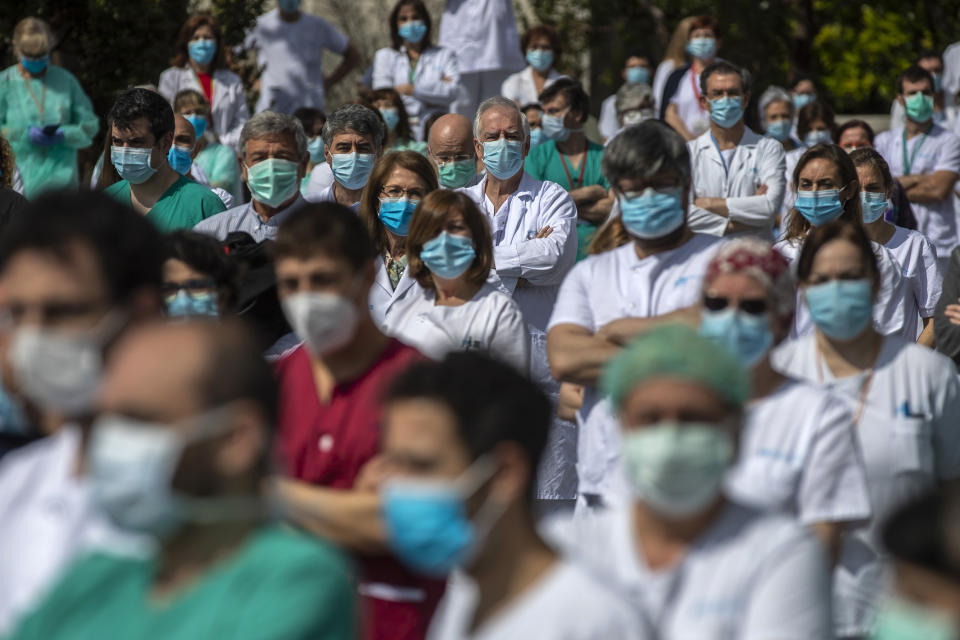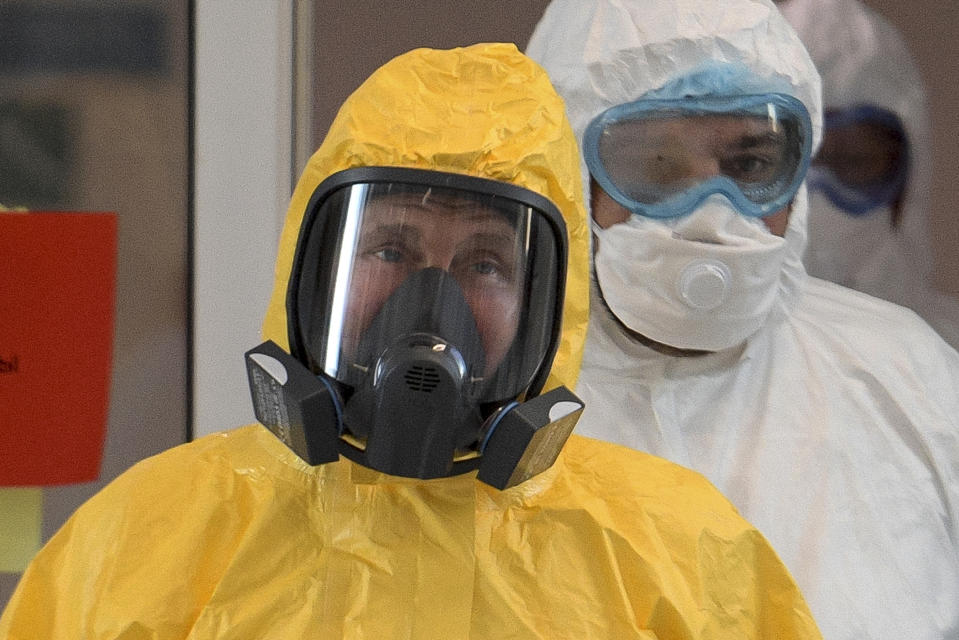How countries around the world are easing coronavirus restrictions
Like U.S. states planning to ease restrictions put in place to stop the spread of the coronavirus pandemic, nations around the world are taking different steps to try to return to normal.
As of Wednesday, more than 3.1 million people had tested positive for COVID-19, the disease caused by the coronavirus, and more than 224,000 have died from it. While those totals continue to grow, governments around the globe are optimistic that lockdowns that have brought economic activity to a near halt may soon be relaxed.
Here’s a quick look at where some large nations stand in the fight against the virus.
China
The country where the pandemic originated, China has also been the first to lift a two-month lockdown in parts of the country, including the city of Wuhan, where the first cases were detected. As of Wednesday, Chinese officials had reported 83,940 cases of COVID-19 and 4,637 deaths. Concluding that the virus cannot be eradicated, the government has put in place a series of new rules at reopened schools and businesses, including cellphone tracing apps and mandatory face masks. Foreigners are banned from entering the country.
Italy
As of May 4, Italian citizens will again be allowed to visit their relatives in small groups. While many businesses, including bookstores and dry cleaners, have already reopened, school will not resume until September. More than 203,500 people have tested positive for COVID-19 in Italy, which has reported more than 27,600 deaths.

Spain
For the first time in six weeks, the Spanish government allowed children last Sunday to play outside. Nearly 300,000 nonessential workers returned to their jobs in mid-April in and around Madrid. But because the rate of new reported cases has not declined quickly enough, lawmakers have extended a state of emergency until May 9. Spain is second only to the U.S. in number of reported cases (236,900). More than 24,000 people have died of COVID-19 there.
Sweden
Following a different approach to the pandemic from its European neighbors, Sweden has not enacted a lockdown of its population to combat the coronavirus. Its government has banned gatherings of more than 50 people, canceled all sporting events and shuttered museums. The attempt at allowing the virus to circulate in order to bolster herd immunity has so far resulted in just over 20,000 confirmed cases of the virus and nearly 2,500 deaths, which is more than double the deaths reported in Denmark (443), Norway (207), and Finland (206) combined.

Russia
After initially sending a planeload of supplies to the U.S. to help treat COVID-19, Vladimir Putin’s government now finds itself struggling to keep up with new cases in its own nation. With the total of confirmed cases nearing 100,000, Putin on Tuesday extended lockdown measures through May 11. So far, at least 972 people have died of COVID-19 in Russia.
Brazil
Brazilian President Jair Bolsonaro has continually discounted the threat from the coronavirus, which he likened to a “little flu” that he said shouldn’t keep people from avoiding the workplace “like cowards.” While Brazil has not put a national lockdown in place, local governors have put restrictions in place, and Bolosonaro has, like President Trump, given his support to citizens protesting them. As the southern hemisphere moves through autumn, the virus is expected to continue its spread in Latin America’s most populous nation. So far, more than 74,000 Brazilians have tested positive for COVID-19, which has killed at least 5,158.
India
In a bid to keep his country’s health care system from being inundated with patients infected by the coronavirus, Indian Prime Minister Narendra Modi ordered a nationwide three-week lockdown on March 24. That has since been extended until May 3. For states with remaining hot spots, the restrictions will extend even further, Modi said this week. India is still working out how it will go about lifting the lockdown. More than 31,700 people have tested positive for COVID-19 in the world’s second most populous country. Just over 1,000 deaths have been reported from the virus.
_____
Click here for the latest coronavirus news and updates. According to experts, people over 60 and those who are immunocompromised continue to be the most at risk. If you have questions, please refer to the CDC’s and WHO’s resource guides.
Read more:




